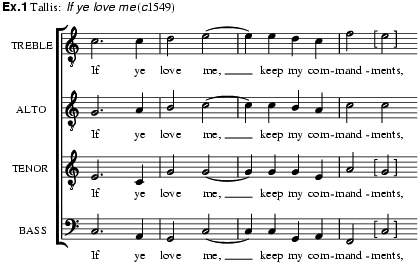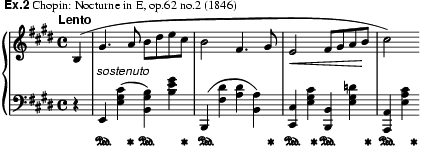
(from Gk. homophonia: ‘sounding alike’).
Polyphonic music in which all melodic parts move together at more or less the same pace. A further distinction is sometimes made between homophonic textures that are homorhythmic (ex.1) and those in which there is a clear differentiation between melody and accompaniment (ex.2). In the latter case all the parts – whether melodic soprano, supporting bass, or accompanimental inner parts – work together to articulate an underlying succession of harmonies. Homophonic music balances the melodic conduct of individual parts with the harmonies that result from their interaction, but one part – often but not always the highest – usually dominates the entire texture. While in principle the same basic precepts govern the melodic behaviour of all the parts, in practice the treble tends to be more active than the others and to have a wider ambitus, and while conjunct motion is the rule in upper voices, leaps are common and sometimes even prevalent in the bass. Inner parts are used to fill in between the two outer voices, which form the contrapuntal framework of the music.


Homophonic textures occur in most if not all European musical traditions. Since at least the middle of the Baroque period music theorists have regarded the homophonic arrangement of four voices (soprano, alto, tenor, bass) as the normative texture of Western music: it has been generally assumed that all tonal music, including melodic imitation, can be represented in terms of a four-part texture and heard as chorale-like successions of harmonies. An important pedagogical practice has thus arisen around the 371 chorale harmonizations of J.S. Bach, while Gottfried Weber chose a homophonic composition – the march of the priests from Mozart's Die Zauberflöte – for the first ever roman-numeral analysis of a complete piece, in the third edition of the Versuch einer geordneten Theorie der Tonsetzkunst zum Selbstunterricht (Mainz, 1830–32, ii). This music-theoretical catechism even now continues to form the basis of instruction in composition and analysis in many undergraduate music curricula.
BRIAN HYER